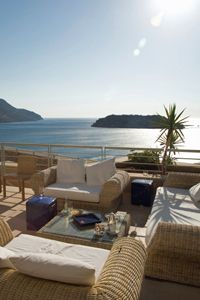As one of the oldest forms of furniture craftsmanship, wicker has captured the hearts of everyone from the average Joe to past presidents. In the White House, President John F. Kennedy had a prized rocking chair fitted with a seat and back of woven rattan, one of the materials used to make wicker furniture [source: John F. Kennedy Presidential Library & Museum].
Some of the oldest surviving specimens of woven chests and boxes made of dried palms or reeds have been found in the ancient Egyptian pyramids, while ancient Syrian statues depicting wicker crafts have also been found [source: Olsson and Saunders]. These wicker crafts spread throughout Asia and Europe. Early U.S. settlers brought wicker craft knowledge from their homelands.
Advertisement
Yet, it was not until one young American took the old adage -- one man's trash is another man's treasure -- that the large-scale wicker industry was launched in the United States. In the1840s, a young man named Cyrus Wakefield observed rattan, used for packing material around ships' cargo, being cast off of ships in the Boston harbor [source: Adamson]. He saw the rattan's potential as a raw material for furniture manufacturing and made a career from selling both the material and the furniture made from it.
By the 1850s, wicker furniture was growing in popularity as a functional piece of art in America. From 1865 to 1880, the majority of wicker furniture was only for indoor use, but slowly it started moving outdoors [source: Saunders]. As tastes evolved, manufacturers began to offer specialized items such as baby carriages and music stands along with painted pieces.
Due to new design trends and materials, wicker's popularity waned in the 1930s. Yet, the style and comfort were rediscovered by the 1970s and continue to be popular today [source: Adamson, Olsson and Saunders]. According to the American Institute of Architects' Home Design Trends Survey, homeowners are increasingly interested in expanding their living space outward [source: Baker]. Wicker has been a great option for outdoor living since the Victorian times, and with new advances in technology, it's an even more logical choice for today's patios and porches.
In this article, we will take a closer look at what makes this unique weaving style work and how it continues to appeal to consumers today.
Advertisement

